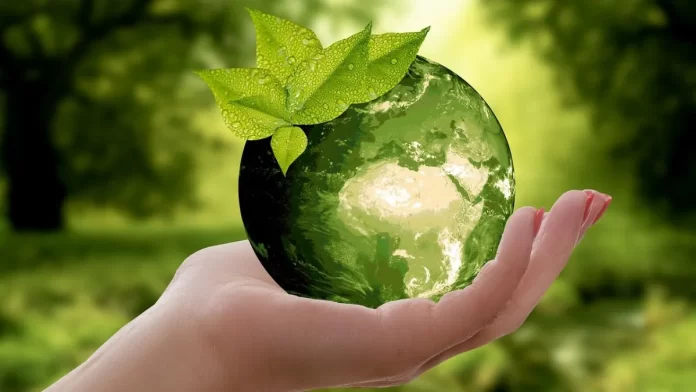In a world increasingly aware of the limitations of our planet’s resources, the concept of the circular economy emerges as a beacon of hope. This innovative approach to economic and environmental sustainability is not just a trend but a necessity for future generations. Whether you’re an individual looking to reduce your environmental footprint or a business striving for sustainability, embracing a circular economy can make a significant difference.
Table of Contents
What is a Circular Economy?
The circular economy is a model of production and consumption that contrasts sharply with the traditional linear economy. Instead of the “take, make, dispose” model, the circular economy emphasizes the continual use of resources. It aims to keep products, materials, and resources in use for as long as possible, extracting the maximum value from them before recovering and regenerating products and materials at the end of their service life.
This model mimics natural systems, where waste is virtually nonexistent—what one process discards becomes the input for another. The circular economy is about designing out waste and pollution, keeping products and materials in use, and regenerating natural systems.
Key Principles of the Circular Economy
The circular economy is built on several key principles that can be applied across various sectors and industries:
- Design Out Waste and Pollution: From the outset, products should be designed in a way that eliminates waste and pollution. This includes choosing sustainable materials, designing for disassembly, and considering the entire lifecycle of a product.
- Keep Products and Materials in Use: Instead of discarding products at the end of their life, find ways to extend their usability. This could involve repairing, refurbishing, or repurposing items. The goal is to keep materials circulating in the economy rather than ending up in landfills.
- Regenerate Natural Systems: The circular economy goes beyond reducing harm—it actively seeks to restore and regenerate natural ecosystems. This can involve using renewable energy, promoting biodiversity, and ensuring that agricultural practices enhance soil health and water quality.
- Promote Resource Efficiency: Efficient use of resources is a cornerstone of the circular economy. This means maximizing the utility of materials and energy throughout their lifecycle and minimizing waste at every stage.
- Foster Innovation and Collaboration: Transitioning to a circular economy requires innovative thinking and collaboration across industries and sectors. Companies, governments, and individuals must work together to develop new business models, technologies, and practices that support a circular economy.
How to Incorporate Circular Economy Principles into Daily Life
The beauty of the circular economy is that it can be embraced at every level, from individual actions to global strategies. Here are some practical ways you can start incorporating circular economy principles into your daily life:
- Reduce and Reuse: Before buying new, consider if you can reduce your consumption or reuse what you already have. Repair items instead of replacing them, and look for second-hand options before purchasing new products.
- Choose Sustainable Products: Opt for products made from sustainable, renewable, or recycled materials. Look for brands that prioritize ethical production practices and have clear policies on take-back and recycling programs.
- Support Circular Businesses: Many businesses are adopting circular economy models by offering products as a service, creating durable goods designed for long life, and implementing recycling and take-back programs. Support these businesses to encourage more widespread adoption of circular practices.
- Practice Composting: Organic waste doesn’t have to end up in a landfill. Composting food scraps and yard waste turns them into valuable nutrients that can regenerate the soil. If you don’t have space for a compost bin, consider joining a community composting program.
- Advocate for Circular Policies: Encourage local governments and organizations to adopt circular economy policies. This can include supporting legislation that promotes recycling, reduces single-use plastics, and encourages sustainable product design.
The Role of Technology in the Circular Economy
Technology plays a crucial role in advancing the circular economy. Innovations in materials science, digital technologies, and data analytics are driving new ways to design, produce, and manage products. For example, blockchain technology can improve transparency and traceability in supply chains, ensuring that materials are sourced and managed responsibly.
Additionally, digital platforms are emerging that facilitate the sharing economy, allowing individuals and businesses to share resources, reduce waste, and maximize the utility of products and services.
The Future of the Circular Economy
As we look to the future, the circular economy offers a transformative vision for a sustainable world. By rethinking how we produce, consume, and manage resources, we can reduce environmental impact, create economic opportunities, and build resilient communities.
The transition to a circular economy will not happen overnight, but with collective effort and innovation, we can move closer to a sustainable future. For those looking to dive deeper into the principles and practices of sustainability, the World Permaculture Association provides valuable resources and guidance. By embracing the circular economy, we take a critical step toward ensuring the health and well-being of our planet for generations to come.
Conclusion
Embracing the circular economy is about more than just reducing waste—it’s about creating a system that benefits people, the environment, and the economy. Whether you start small by reducing your own waste or engage in larger-scale efforts to promote circular practices, every action contributes to a more sustainable world. Explore more about sustainable living and permaculture at the World Permaculture Association and join the movement towards a regenerative future.
